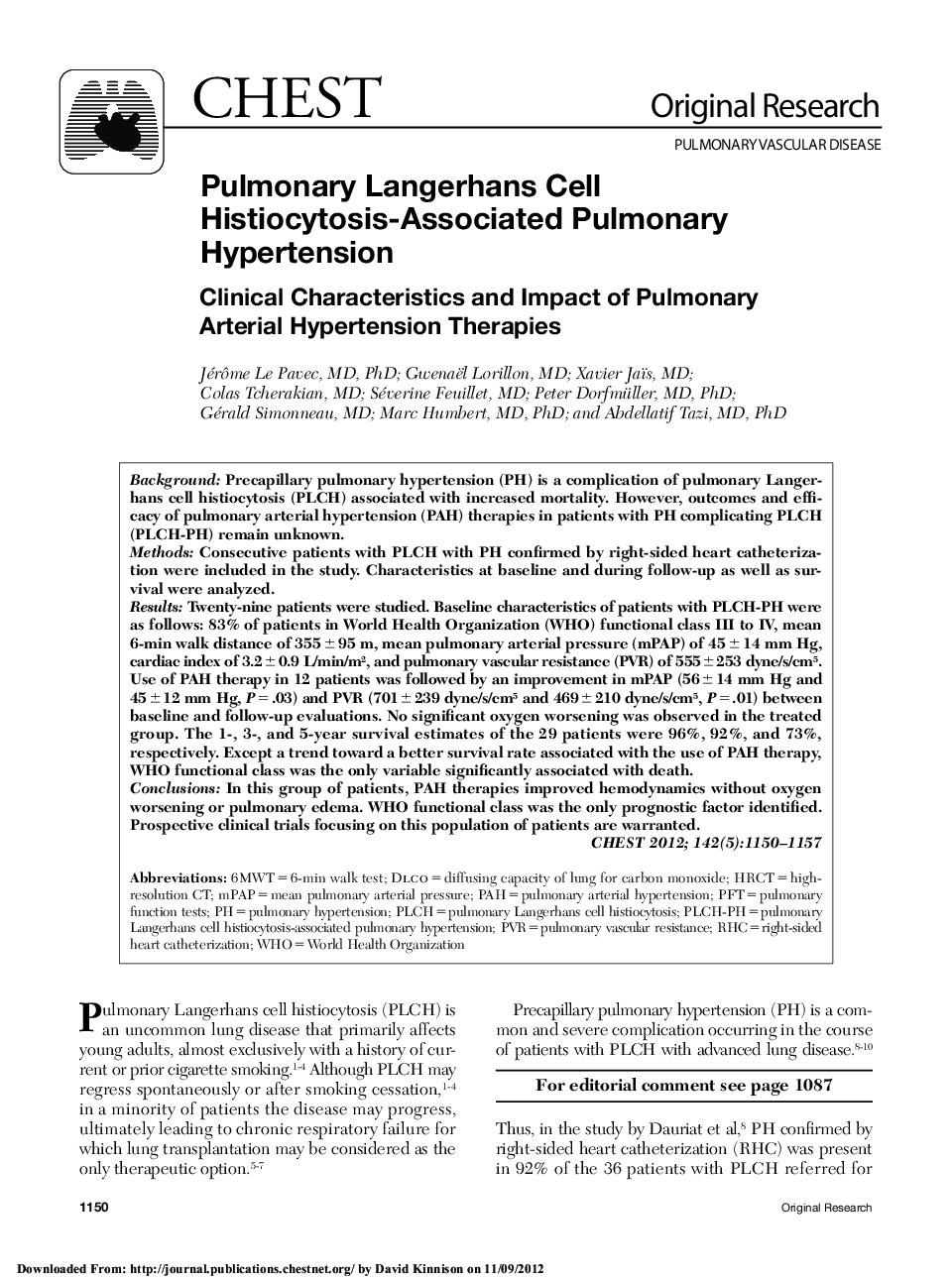| کد مقاله | کد نشریه | سال انتشار | مقاله انگلیسی | نسخه تمام متن |
|---|---|---|---|---|
| 2900984 | 1173342 | 2012 | 8 صفحه PDF | دانلود رایگان |

BackgroundPrecapillary pulmonary hypertension (PH) is a complication of pulmonary Langerhans cell histiocytosis (PLCH) associated with increased mortality. However, outcomes and efficacy of pulmonary arterial hypertension (PAH) therapies in patients with PH complicating PLCH (PLCH-PH) remain unknown.MethodsConsecutive patients with PLCH with PH confirmed by right-sided heart catheterization were included in the study. Characteristics at baseline and during follow-up as well as survival were analyzed.ResultsTwenty-nine patients were studied. Baseline characteristics of patients with PLCH-PH were as follows: 83% of patients in World Health Organization (WHO) functional class III to IV, mean 6-min walk distance of 355 ± 95 m, mean pulmonary arterial pressure (mPAP) of 45 ± 14 mm Hg, cardiac index of 3.2 ± 0.9 L/min/m2, and pulmonary vascular resistance (PVR) of 555 ± 253 dyne/s/cm5. Use of PAH therapy in 12 patients was followed by an improvement in mPAP (56 ± 14 mm Hg and 45 ± 12 mm Hg, P = .03) and PVR (701 ± 239 dyne/s/cm5 and 469 ± 210 dyne/s/cm5, P = .01) between baseline and follow-up evaluations. No significant oxygen worsening was observed in the treated group. The 1-, 3-, and 5-year survival estimates of the 29 patients were 96%, 92%, and 73%, respectively. Except a trend toward a better survival rate associated with the use of PAH therapy, WHO functional class was the only variable significantly associated with death.ConclusionsIn this group of patients, PAH therapies improved hemodynamics without oxygen worsening or pulmonary edema. WHO functional class was the only prognostic factor identified. Prospective clinical trials focusing on this population of patients are warranted.
Journal: Chest - Volume 142, Issue 5, November 2012, Pages 1150–1157